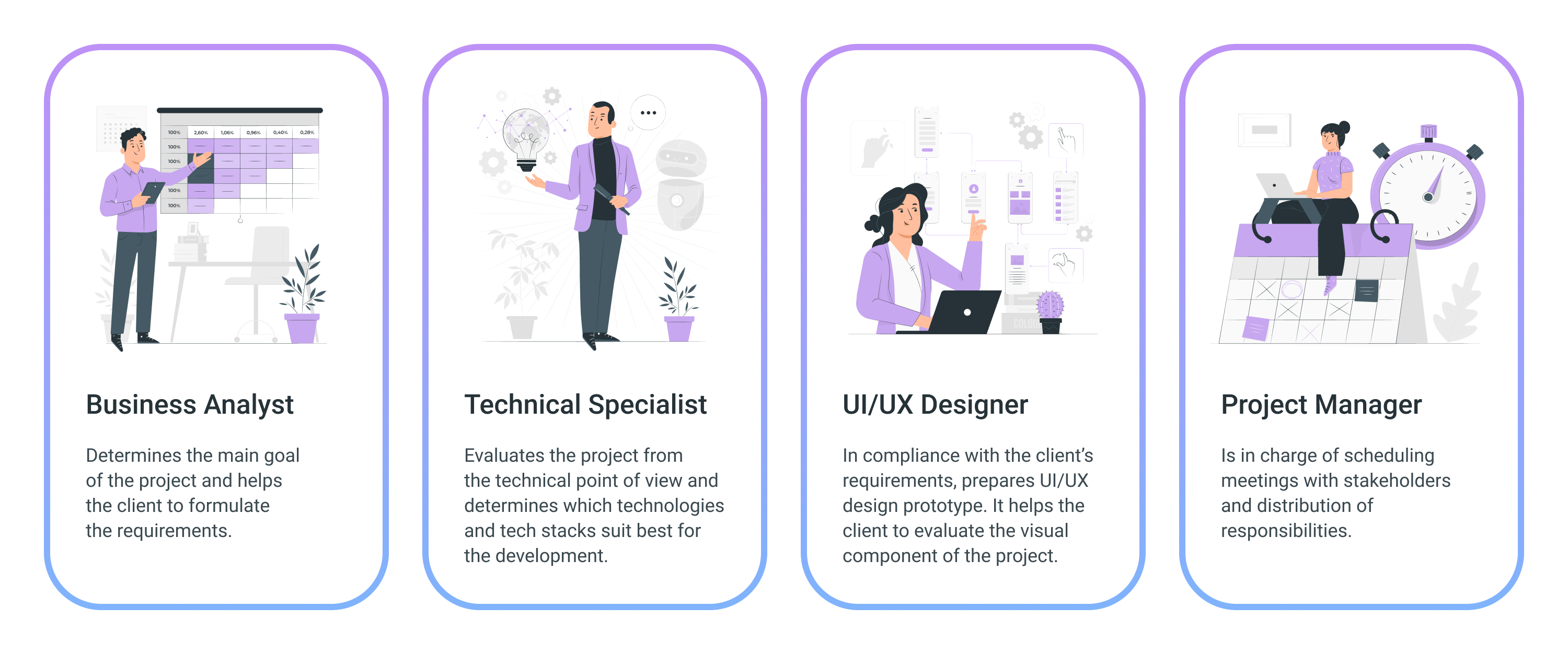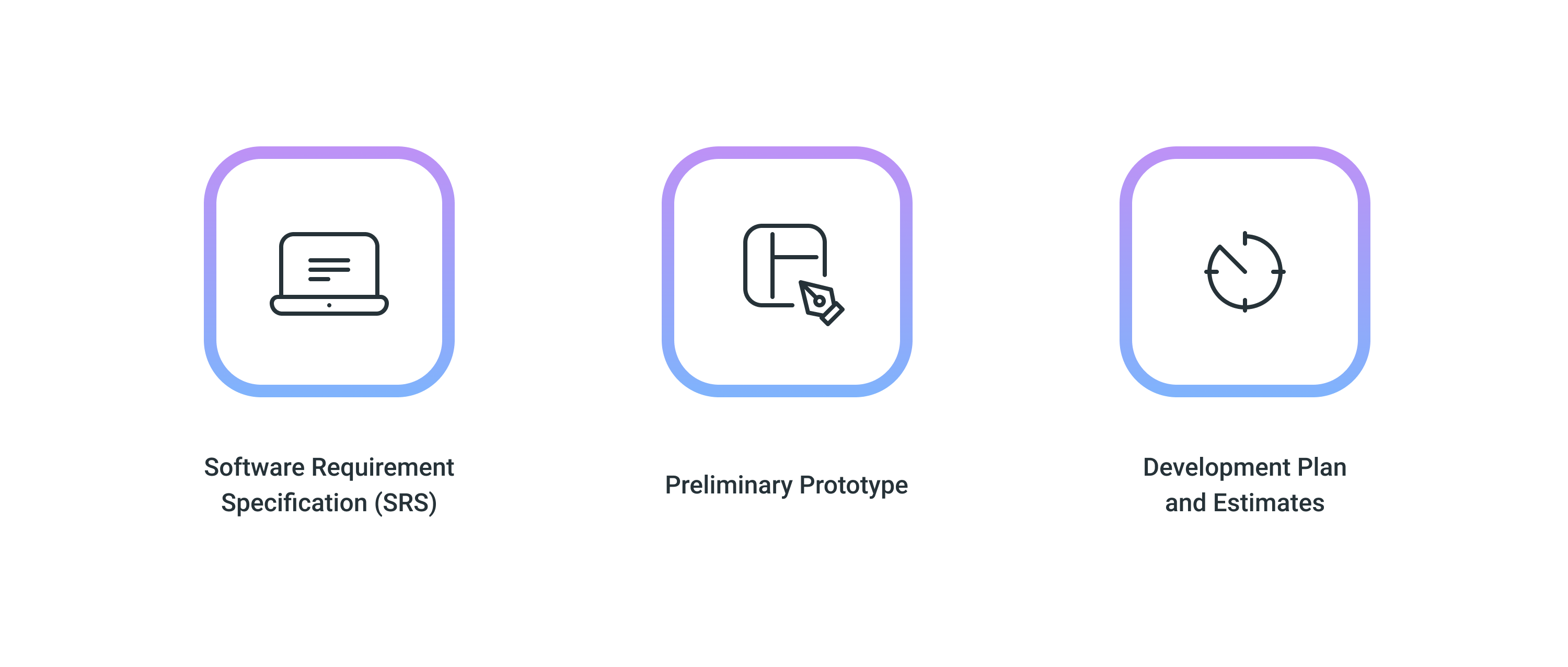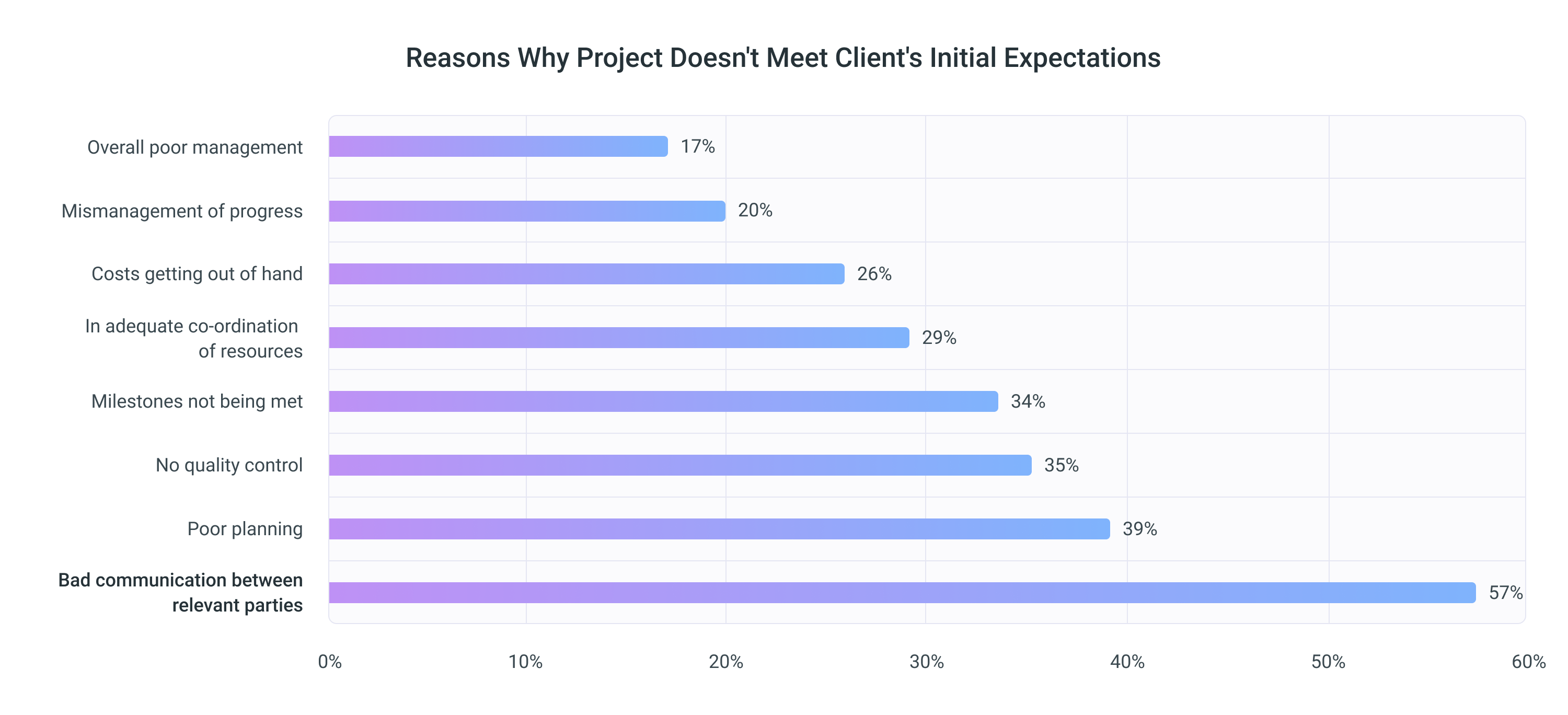Imagine that a software project is a building. Before the construction, it should be carefully designed and meet the quality standards. If the process is not well planned, necessary research is not conducted properly — the consequences may be unpredictable. The same is related to software project development. If the project plan is not well elaborated, there is a possibility of domino effect. Developers should have a clear understanding of what a customer is expecting to gain in the result: how the project should work, and what functionality it should perform. Generally speaking, if you want the software development process to work like clockwork, it’s necessary to pay special attention to the project preparation. In the article we speak about the importance of conducting the discovery phase of a software project which precedes the development process and helps to avoid a plethora of undesirable consequences.
Essense of Discovery Phase: Actions to Be Taken and Specialists Involved
Discovery phase is the initial phase of a software project, which helps to define its goals, scope and limitations. Owing to this phase, there is a possibility to analyze the information related to the project, and to understand the target audience of the future software product. To have a clear picture of what a project should represent, it’s necessary to involve different specialists that have experience in their particular areas:

- Business Analyst
Determines the main goal of the project and helps the client to formulate the requirements. - Technical Specialist
Evaluates the project from the technical point of view and determines which technologies and tech stacks suit best for the development. - UI/UX Designer
In compliance with the client’s requirements, prepares UI/UX design prototype. It helps the client to evaluate the visual component of the project. - Project Manager
Is in charge of scheduling meetings with stakeholders and distribution of responsibilities.
A period of time required for the project discovery phase may vary from several weeks to several months. It depends on software project complexity and its size. During this interval of time the team takes the following actions:
- Identification of the Stakeholders
Who will build and who will use the product? At the very first step of the discovery phase it’s necessary to define those who will be involved in the entire development process: product owners, end-users, developers etc. - Setting Up Business Goals
What do you want to reach with the help of the software? What functions should it perform and what requirements it should meet? Answers to these questions will help to understand the main idea of the project and define the approximate key feature set the software should possess.
Read Also Off-The-Shelf Software vs Custom Software: Why Custom Option Wins
- Defining the Target Audience
User-first approach should be taken into consideration when you intend to build a software, since it’s an effective way to understand who will use it and how. To define your target audience, it’s necessary to conduct various types of studies. Surveys conduction, focus groups creation — help to get the picture of potential users and gain valuable feedback. - Market Analysis and Research of Competitors
No matter what field your future project belongs to, it’s almost impossible to launch it successfully without these two components. These actions will facilitate the choice of a niche, help to evaluate the product’s potential competitiveness, and give the understanding of what fundamental difference from the competitors your product should possess. - Identifying the Feature Set
After the business goals are cleared up, the target audience is defined, market analysis along with the competitors’ research is conducted, it’s time to think over the features a software will possess. A business analyst will help you to create the list of features, necessary for minimum viable product (MVP) creation, and will prepare the Feature Description document which contains the brief overview of each function. After the release of MVP you will be able to gain the first feedback from users and proceed with changes if such need arises.
Read Also Top List of Mistakes to Avoid During MVP Development
- Preparing List of Requirements
At this step the picture of the future product is getting more clear. Business analyst collects the project requirements in collaboration with the technical specialist who defines technologies that suit best in this particular case. On the basis of the received information, BA prepares a software requirements specification (SRS) document which includes the systemized and detailed information about the project, such as project description, its goals, scope, and functional and non-functional requirements. - Creation of the First Prototype
UI/UX designer creates the interactive model, the prototype of the future project so the customer will be able to evaluate how the product will look and how it is supposed to work. - Time & Budget Estimation
At this stage all the gathered information is streamlined, and team members who took part in the discovery phase make the approximate estimates of how much time is required for development, and how many team members will be involved in the process.
Discovery Phase Deliverables
When all necessary research is conducted, project goals and requirements are clear, deadlines defined, issues related to budget estimation are resolved — and it’s time for a customer to gain the deliverables. But which ones, it depends on the agreement between a customer and a vendor. The discovery phase deliverables may include the following:

- Software Requirement Specification (SRS)
This document contains a detailed description of your future product, which tech stack will be used for the development, the array of features the software will possess and what architecture it will have. - Preliminary Prototype
A customer gains the preliminary prototype which itself is a great opportunity to get the insight of how the future project will look and how it’s supposed to work. Therefore a client has a possibility to evaluate the future interface before the software development process has even started. - Development Plan and Estimates
All the deliverables, milestones and estimates will be documented in the final project specification. Therefore a customer will have a clear picture of how the development process will go.
Main Benefits of Conducting the Discovery Phase
- A Clear Understanding of the Essence of the Project
Upon discovery phase completion, the team providing custom software development services has a clear picture of the project and its main business goals. Such an approach helps to choose the appropriate strategy for reaching them. - Identification of Additional Project Aspects
Some details may not be clarified on the presale stage. Conducting the discovery phase helps to define all importants aspects that had not been taken into account earlier. - Better Understanding of Potential Users
During the discovery phase, market research is conducted along with analysis of competitors. It allows to gain a clear understanding of the target audience of the product and define their problems and expectations. - Consideration of Alternative Solutions
A customer may have a clear vision of what solutions and technologies should be implemented for project development. Due to the involvement of a technical specialist in the discovery phase, the team member will be able to evaluate the future project from the technical point of view and offer an alternative solution that may suit better. - A Clear Roadmap
When you have a clear and well elaborated plan, it’s always easier to follow it. Each team member knows his/her responsibility area, and what exactly is expected from his/her work. Such an approach helps to avoid miscommunications within the team and between the team and a customer, which allows to avoid significant deviations from the established plan. - Risk Control
Thanks to the conducted research and received information, it becomes possible to make decisions based on the real data, not on assumptions. With the conducted discovery phase of a software project, the customer may be sure that:
1) The product is beneficial for users;
2) The product is competitive on the market;
3) The risk of additional expenses and missed deadlines is minimized;
4) Technologies chosen for development suit best;
5) The possibility of miscommunications and misunderstandings between the team and the customer is extremely low;
- Deadlines Set, Costs Determined
When the deadlines and costs are stipulated beforehand, it’s much easier to adhere to them. Efficient time management within the team, setting up priorities help to avoid unnecessary changes leading to the project release delay and additional expenses. The entire development process is transparent, and a customer is aware of what should be done and when, and thus has a possibility to monitor the workflow. - Expectations will Meet the Reality
“Expectations vs reality” joke has become a meme pretty long ago. In case you do not want your product to be an addition to this collection of memes, starting your software project from the discovery phase is essential. Drawing on the assistance of a business analyst, you will have a possibility to evaluate the target market along with needs of your end-users. Thereby on the basis of the conducted research, you will be able to formulate your requirements to the project precisely and clearly, which will help you to gain the product that meets all your expectations.
To Discover or not to Discover? That is the Question
The discovery phase of a software project is not obligatory and can be skipped if a client wants. But in this case it’s necessary to be prepared for a plethora of significant risks. First and foremost, the product may turn out to be not competitive on the market or perform functions that would be useless from the potential users’ standpoint. Such a scenario is quite possible if you give insufficient weight to the necessity of conducting the necessary research which is a part of the discovery phase.
Second, there is a risk of spending much more time and money to build the product. In the absence of the detailed plan, there is a high possibility of all kinds of reworks and changes, which will eat a significant part of time and budget. Mainly it happens due to miscommunication and misunderstandings that could have been avoided if all vitally important issues had been agreed-upon and documented.
Take a look at the graph where main reasons why a project doesn’t match the client’s expectations are indicated:

In the graph we can see that the mismatch happens in most cases due to bad communication between parties and poor planning. The discovery phase conduction will facilitate the mutual understanding between a customer and a vendor and will give a possibility of more detailed planning.
So as is known, if there is no clear plan — there is nothing to adhere to, thus it should not be expected that the development process will be coherent if the discovery phase is skipped.
Conclusions
Discovery phase of a software project is a very important and labor-intensive process which requires tight collaboration within the team, and between the team and the customer. Owing to it, the software project goals and requirements are clear, deadlines and costs are agreed upon. These facts facilitate the following development process and make it more coherent.
At XB Software we always recommend to start the project from the discovery phase, therefore we will be able to clearly understand your idea and evaluate it from different standpoints, which will help you to gain the product meeting all your expectations. If you have an innovative idea, feel free to contact our team, we will provide you a free consultation on your project.